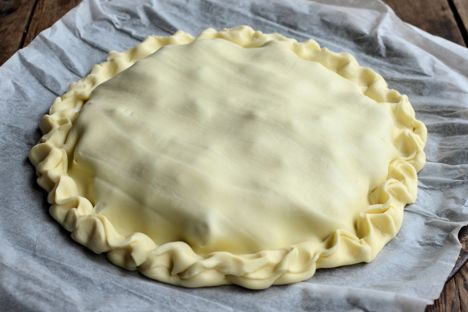
How to choose pastry
Pastry has been made for thousands of years all over the world, and plays a part in many different cultures and cuisines. It comes in many forms, shapes and sizes, and can be used in both savoury and sweet dishes, from the heartiest of pies to the most delicate of patisserie.
How to choose pastry
Pastry has been made for thousands of years all over the world, and plays a part in many different cultures and cuisines. It comes in many forms, shapes and sizes, and can be used in both savoury and sweet dishes, from the heartiest of pies to the most delicate of patisserie.
When cooking with pastry at home, it is important to select the right one for the job, as although the three most commonly used types (puff, shortcrust and filo) are quite adaptable, they will all give a very different result to the final dish.
Puff pastry
Rich and flaky, puff pastry is often considered the king of pastries with its highly discernible layers and towering rise. It is made from a laminated dough, which means that layers of dough and fat are sandwiched and rolled together, then overlapped a number of times (usually 6–8) to create layers. When cooked, the trapped air between the layers of fat and dough rise, resulting in a flaky, airy pastry.
Commonly used in Britain to top pies or wrap Wellingtons, puff pastry is often found in a range of traditional French dishes such as mille-feuille (a classic patisserie with layers of sweet cream), pithiviers (round, domed pies with a variety of fillings), beef or salmon en croute (meat or fish wrapped in pastry, similar to a Wellington), or the ultimate French classic, a tarte Tatin.
Puff pastry has a relatively delicate structure, so works best when used as a topping for pies, or as a flat base for dry ingredients, which will not soak into the pastry and ruin the layers. In this way, it can be used as a simple tart base – just throw a few ingredients on top and you will have a tasty meal in under an hour, such as in these puff pastry pizzas which make a great after-work treat.
Shortcrust pastry
Much sturdier than puff, shortcrust pastry is a combined dough of flour and fat, resulting in a crumbly texture, rather than flaky. As it has a much closer crumb structure, it can be used to construct robust cases and exteriors for pies and tarts, and can stand up to both wet and dry fillings.
To create this sturdy base, shortcrust is normally blind baked in the required tin before a filling is added, ensuring the pastry has mostly cooked and dried out first. Quicker variations, such as this caramelised shallot and goat’s cheese galette, don’t require blind baking, but be sure to check that the pastry is cooked underneath before serving.
Easily recognisable in many classic recipes, shortcrust pastry forms the base of savoury quiches, comforting pies and a whole host of sweet desserts, from a traditional Bakewell tart to festive mince pies or an elegant tarte au citron. This adaptable pastry is equally suited to making smaller pies and tarts, making it perfect for individual portions or canapés.
Blind baking, or pre-baking as it's sometimes called, is the process of baking a pie crust or tart case before adding the filling. Baking blind is necessary to ensure the pastry is cooked-through and doesn't become soggy if the filling is too wet. Make sure you fill the pie or case before the pastry is fully baked to avoid over-cooking it.
Filo pastry
Filo pastry is notably different to both puff and shortcrust. Made with relatively little fat, the pastry comes in very thin sheets which usually need to be layered together to create a thin, flaky casing for fillings. The nature of this pastry makes it a popular choice if looking for healthier options, or when time is short, as it cooks far quicker than puff or shortcrust. On the other hand, it is very fragile, and can rip or tear easily when used, and again, is better suited to slightly drier fillings.
While both puff and shortcrust can be manipulated and shaped quite easily, the layers of filo pastry are not quite as flexible. Tart tins can be lined by overlapping the sheets and this creates the distinctive crinkled layers associated with filo. The layers are usually brushed with butter to help them stick together, but oil can be used for a vegan or dairy-free alternative. Filo can be used as a base for tarts and quiches, or in more exotic dishes, such as samosas or these Chicken, manchego and chorizo briouats.

